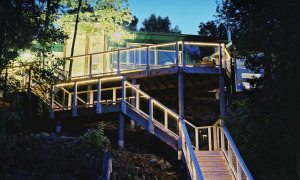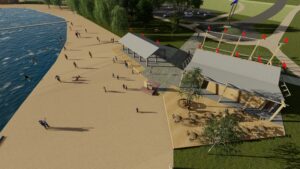These guidelines are primarily aimed at assisting designers, owners and builders to provide existing buildings with increased levels of sustainability, while protecting character-defining elements. They are intended for a broad audience involved with, or responsible for, built heritage and the existing built environment at all jurisdictional levels.
The Document
Part 1 Introduction and Context
This section provides background and context on issues related to sustainable rehabilitation of buildings. It defines terms and frames why sustainable rehabilitation is useful and important, how it relates to the wider world, and how this document relates to the Standards and Guidelines for the Conservation of Historic Places in Canada.
Part 2 Understanding Your Building
This chapter emphasizes the fundamental need to properly and thoroughly understand the existing building and its broader context, including its history, its significance in heritage terms, original design, and changes to a building and its use over time, prior to undertaking rehabilitation work. It also provides information on broader related issues, such as the building site’s wider context and the rehabilitation of buildings from the Modern period.
Part 3 Building Component Guidelines
Part 3 focuses on providing direct assistance through practical guidelines and best practices in planning, designing, and executing a rehabilitation project; broken out by building components to simplify the approach to building rehabilitation; also looks at building materials and maintenance, inherently sustainable elements and sustainability challenges, considering interrelationships with other building components.
Part 4 Further Information
This final chapter provides some potential sources of information to better understand these guidelines and the issues surrounding sustainable conservation.
Case Studies
A collection of case studies illustrates some examples of building rehabilitations across Canada, where sustainable principles such as those featured in the Guidelines, are effectively incorporated to help significantly improve the buildings overall sustainability while protecting character-defining elements and thus, heritage value.
Connecting Building Resilience to Other Guidelines in Canada
The starting point for the guidelines documents was to assess which direction to take. After reviewing various books, periodicals, and other guidelines focusing on similar subject mater, TRACE found a common thread of approaching existing buildings from a sustainability angle, which is important given the important role existing buildings have to play in climate change solutions. However, given the audience for this National Guideline the team chose to approach sustainability through a heritage lens, using the Standards and Guidelines for the Conservation of Historic Places in Canada (Federal Provincial Territorial Historic Places Collaboration (FPTHPC), 2nd Edition, 2010) as a starting point. This approach informed the overall structure of the document and provided an immediate familiarity for the reader, especially those familiar with the Standards and Guidelines. As highlighted above, the document was divided into a series of parts and the authors found there was a lot of interconnection between the different types of contents that would benefit from a more dynamic format.




